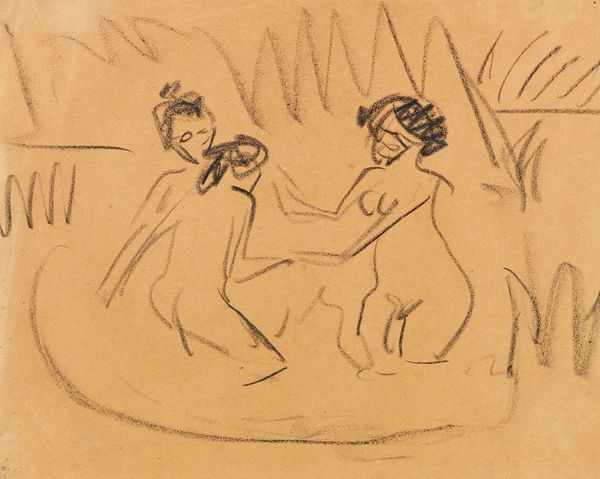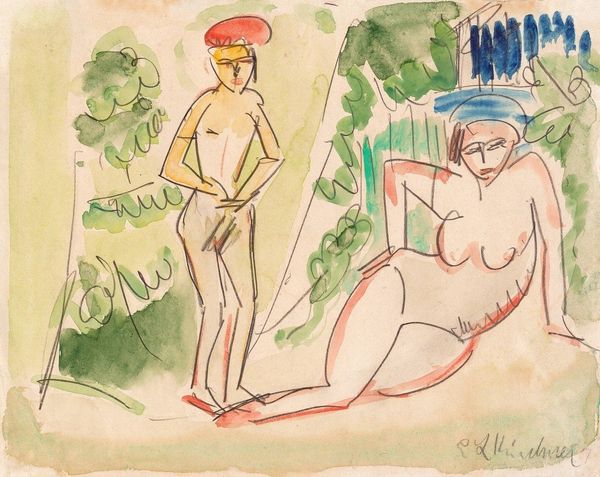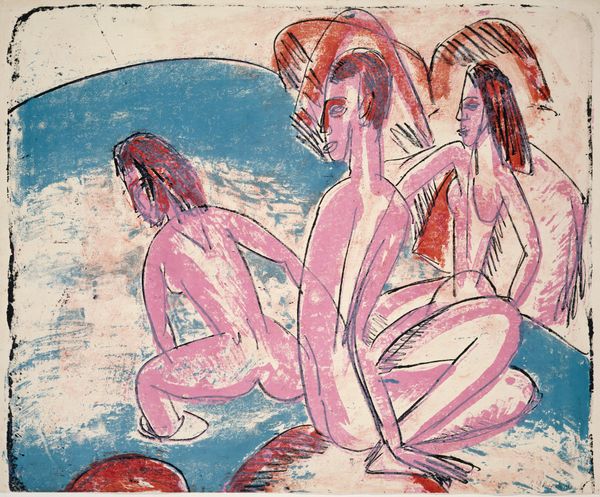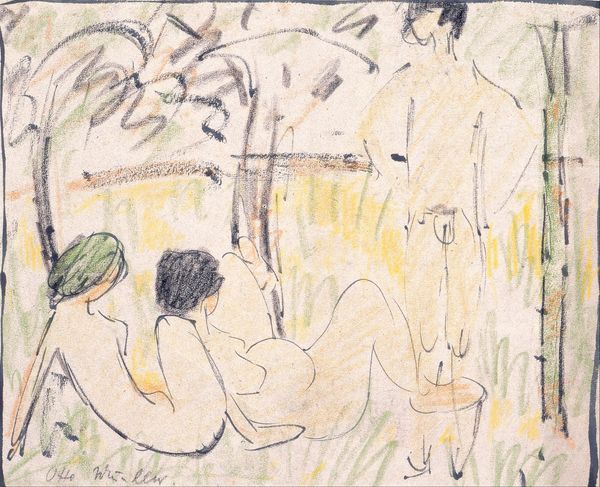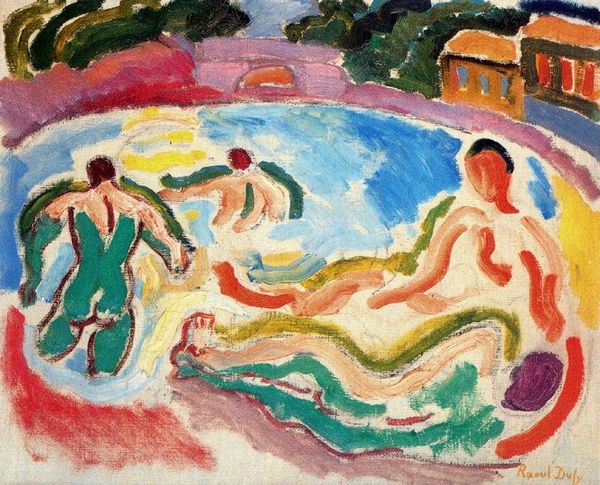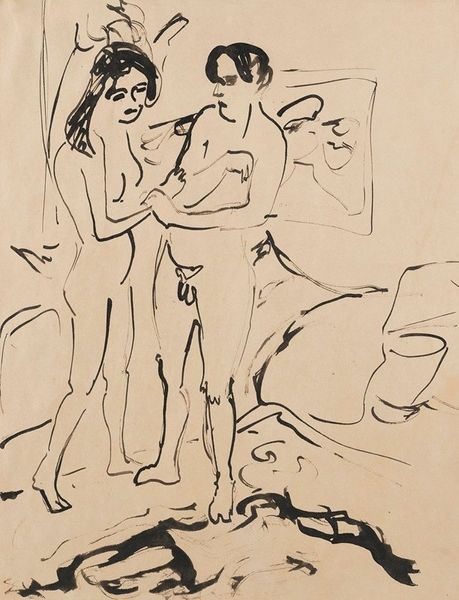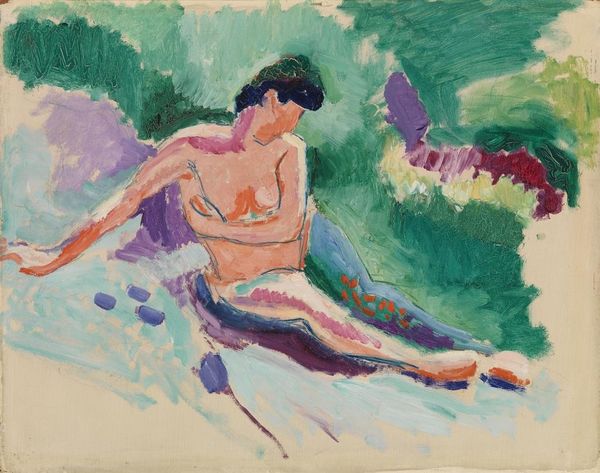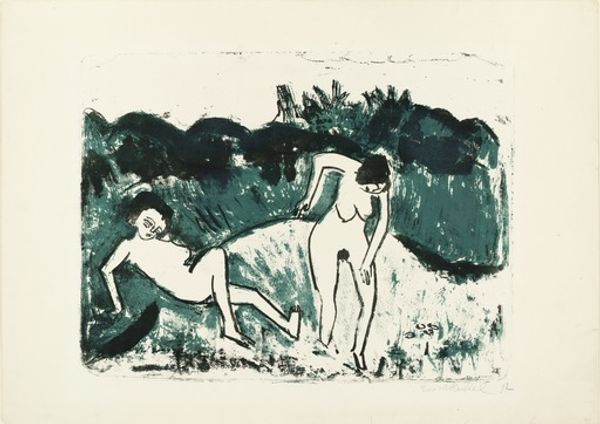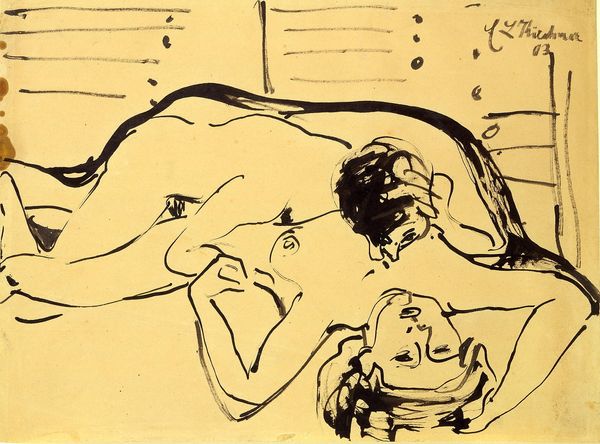
drawing, pastel
#
drawing
#
water colours
#
landscape
#
figuration
#
expressionism
#
pastel
#
nude
Copyright: Public Domain: Artvee
Curator: Ernst Ludwig Kirchner's "Bathing Women," from 1909. This piece, rendered in pastel and watercolor, offers us a glimpse into the artist's early expressionistic explorations. Editor: Immediately, I’m struck by the dynamism. The colors, the composition – it all feels so immediate and raw. There's a tension between the figures and their landscape, creating a distinctive spatial depth through color choice. Curator: Precisely. Kirchner, a key figure in the Die Brücke movement, was deeply engaged with depicting modern life and raw emotions. He captures that here but it’s important to also remember the social context. Nudity in art, even in ostensibly pastoral settings, reflects the avant-garde's rejection of bourgeois morality. The lack of precise features in the figures makes one wonder whether this imprecision alludes to societal marginalization and lack of identity. Editor: An interesting viewpoint. Though, beyond this, the chromatic choices speak volumes. He pits blues against pinks to indicate water, delineating a landscape and simultaneously abstracting it. Notice how the visible paper acts as the canvas and a form of negative space at the same time, dissolving the traditional barriers. Curator: The angularity and bold color choices are signatures of his Expressionist style, of course, indicative of the period's search for ways to articulate feelings about a rapidly changing world. These were modern people in a modern world. There is also an orientalizing theme, reminiscent of German colonial fantasies in African and Oceanic lands. In many ways, this makes the work a clear product of its time, with coloniality being something that it perhaps fails to reckon with fully. Editor: Fair enough. I might instead push us to consider how he anticipates a cubist shattering of form through planar presentation. He shows how simultaneous perspectives allow him to distill nature to pure expression, a flattening of reality. It seems reductive to merely categorize this as ‘Orientalist’. Curator: I concede there are certainly formalist breakthroughs taking place. The composition is deceptively simple, creating visual movement as our eyes move through layers, tracing pastel and pigment against raw paper. And perhaps through it we must allow that these complex tensions—coloniality, sexuality, gender—operate beyond simplistic labels, even today. Editor: Precisely. Art like this serves as an opportunity to re-examine not just historical assumptions, but visual orthodoxies that shape our thinking still.
Comments
No comments
Be the first to comment and join the conversation on the ultimate creative platform.

